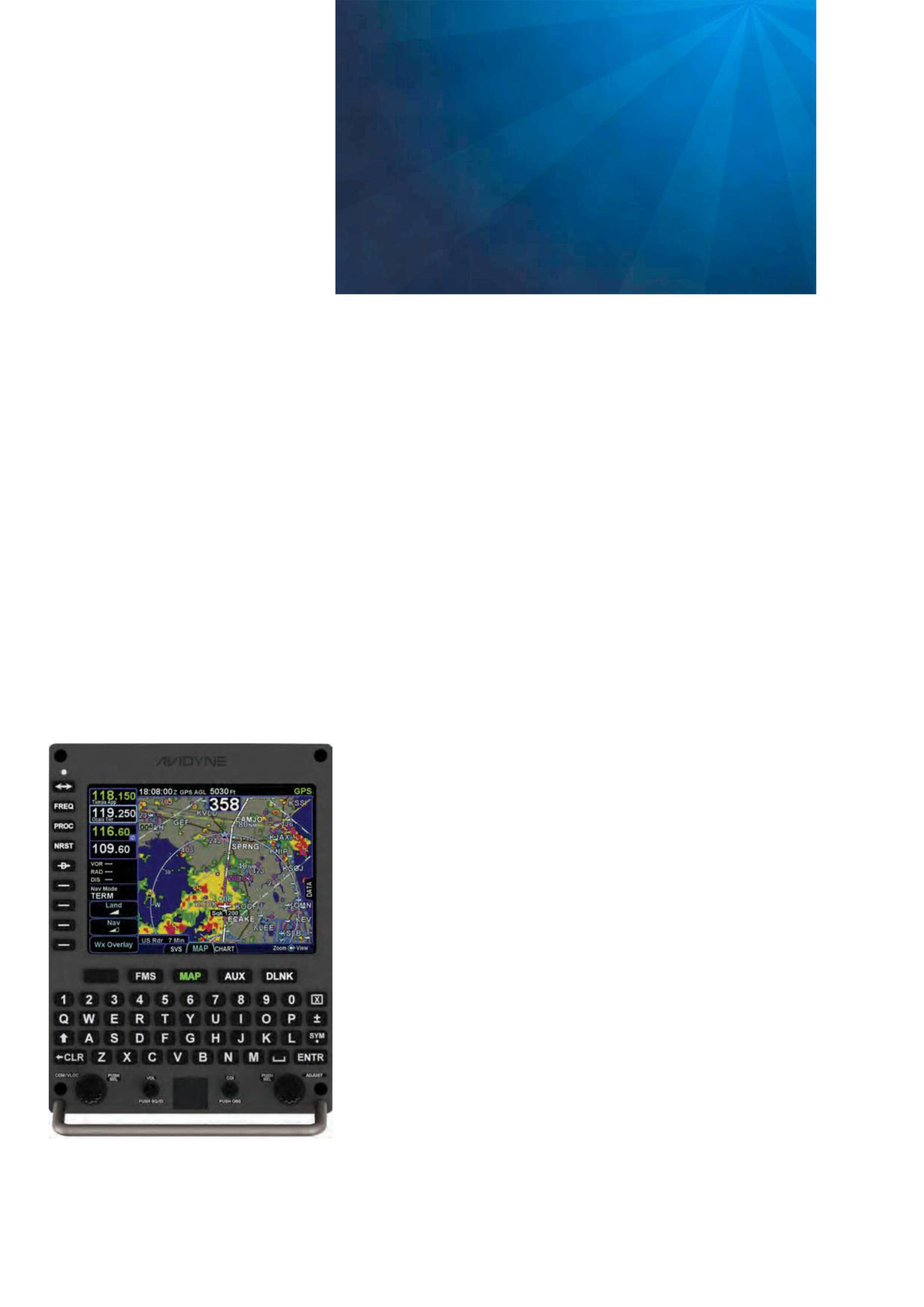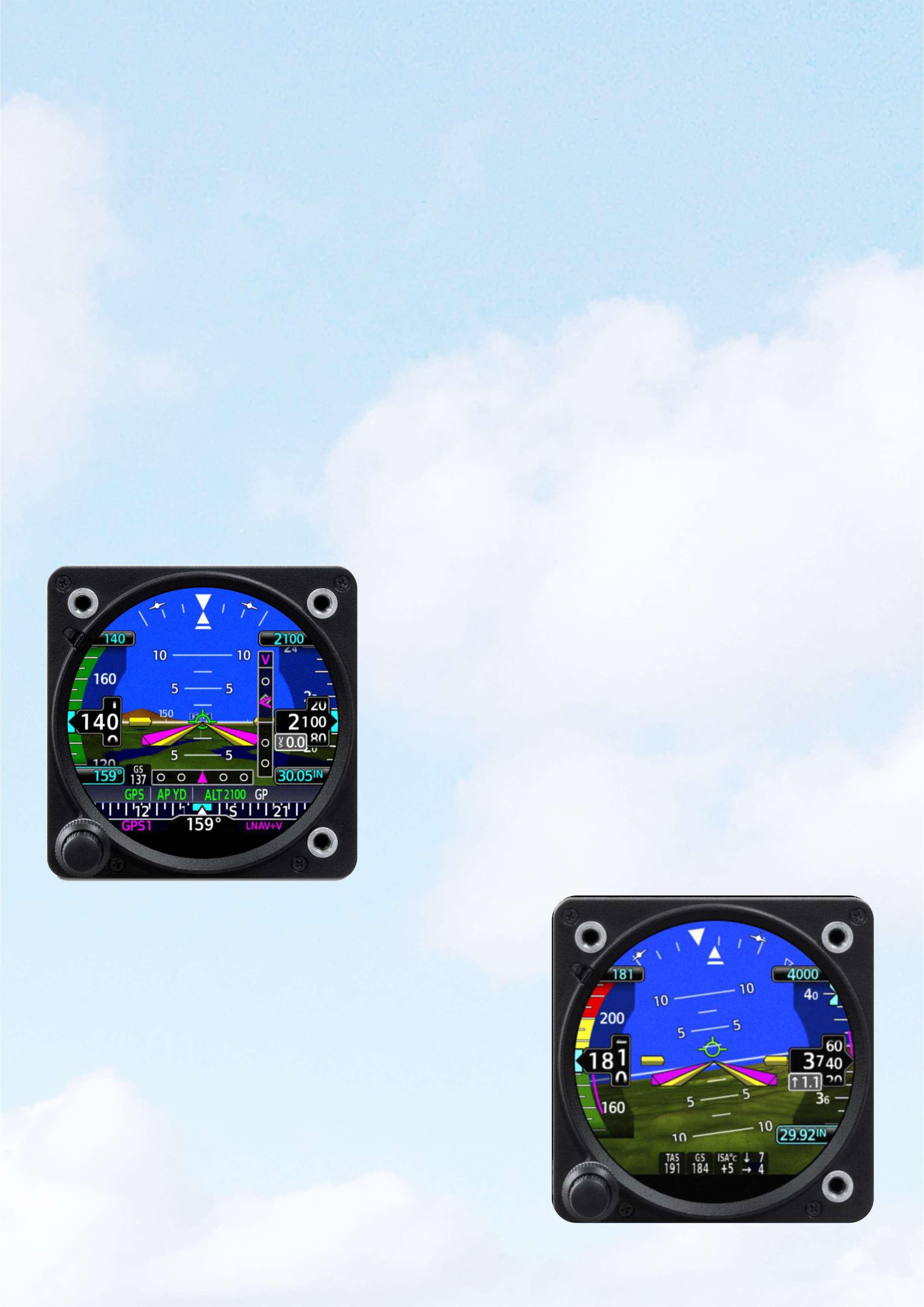
8 minute read
DIGITAL INCENTIVES
STORY BY – Scott M. Spangler
Source: AVIONICS NEWS February 2020
Advertisement
A capability, the dictionary tells us, is the ability to do something well, in a skilled and competent way. It can be “a capacity for being used or developed,” but it can also be “an ability or feature not yet developed or utilized.” A commodity, on the other hand, is an economic good, “any useful thing,” an article of commerce. While it has useful value, something people buy and sell, its wide availability typically leads to smaller profit margins, making it subject to marketing exploitation.
In the era of digital avionics, these definitions seem to proscribe the marketing lifespan of must-have functions that all too soon become expected, standard features. Do you remember when moving maps were something special? Before moving maps, back when boxes did just one thing, sales and rebates were the go-to sales incentives avionics manufacturers used to market their analog hardware. Now, with boxes
With a new bezel and keyboard, the Avidyne Atlas is an IFD that employs most of its optional fun-ctions as standard capabilities.
performing multiple functions, sales incentives seem to be software driven. Market forces drive the incentive employed, but the goal is the same, to increase sales. “To be crystal clear, manufacturers don’t like these,” said Bill Stone, Garmin’s senior business development manager, with a chuckle.
At the same time, consumers expect them, Stone said just before Thanksgiving, noting that the Black Friday sales had already begun. Consumers won’t write the check until they get that deal. “From a marketer’s standpoint, even though they hate it, it gives us more arrows in the quiver.” Despite consumer expectations, “show specials” are not universal. In the nicest way possible, original equipment manufacturers must explain to consumers that there is no show special on popular products with delivery waiting lists because their sales don’t need incentives.
“Consumers have a different view of things, different expectations,” said John Uczekaj, president and chief executive officer of Aspen Avionics. “A consumer, naturally, wants lower costs all the time, but they are also expecting that their flying lives are more in tune with the digital environment of their personal lives, and that seems reasonable.”
It is a subtle change as the avionics industry digitizes. It began with glass cockpits, whose first customers were flight departments and airlines, who were concerned with fleet costs and standardization.
The general aviation consumer has different expectations. “In their daily digital lives, people are getting upgrades on their phones, tablets and home systems,” Uczekaj said. “These expectations are starting to bleed into our world. OEMs have to start working to meet those expectations.”
Cost is what separates avia- tion from everyday life in the digital realm. Most of the apps on a pilot’s phone and tablet add more features and functionality through free updates. Given the consequences of unfulfilled promises of reliable functionality, aviation is not so free or freewheeling. “Certification costs certainly affect the price of what we do, so we have to take that into consideration,” Uczekaj said “Software is not well understood,” Stone said.
There seems to be no money in the digital ones-and-zeros, “except for the millions spent on development and certification, and that can significantly outweigh the costs of producing hardware.”
Amortizing software development costs across an unknown number of products is difficult. “The more you sell, the lower the cost of the product, but you don’t know how many you are going to sell,” Stone said. “With large development costs typically at risk, it’s moving beads on the abacus.” Ultimately, Uczekaj believes that the expectations of “free” update functionality between a pilot’s personal and flying life will harmonize. Obviously, “the logistics of that still need to be worked out, but the concept is where we are headed. The challenge for us is deciding what we charge for and what we do not charge for.
What is part of an app upgrade, and what is truly a new functionality?” Some OEMs provide more functionality and better displays through new hardware.
Call it the old-school iPhone paradigm; the hardware has just enough digital horsepower to run the operating system and applicable apps. Perhaps this is a continuation of an analog mindset, where new hardware was the only way to deliver new capabilities. Given the pace of technology, a more efficient and economical strategy is to build hardware with more computing horsepower than the initial application needed, according to Dan Schwinn, president and CEO of Avidyne. “We designed our first-generation products 25 years ago,” Schwinn said. “They kind of ran out of gas after 10 years in terms of new features, whereas our current generation has had a lot of legs and still have room to grow. That enables us to provide major upgrades. Maybe we charge for them,maybe we use them as an incentive.” Synthetic vision is an example, said Tom Harper, Avidyne’s marketing director. Designed as an option, it was also an opportunity to reward existing customers by giving them a free upgrade. “It turned satisfied customers into big fans because they effectively got something they were never promised for nothing.” Like a modern car, the IFD is loaded with processors,
Schwinn said. “When we come up with something new, with all these processors, where’s the right place to put the new capability? Maybe we have to streamline something else,” but such software work is not that pressing a challenge.
The Avidyne Atlas system, introduced at the National Business Aviation Association’s Business Aviation Convention & Exhibition in October 2019, is an example. Building on the success of the IFD’s integration with the legacy Pro Line 21 and Primus 1000 avionics in business jets, the Atlas embodies many expensive IFD optional capabilities as standard features, Schwinn noted. It has a larger bezel and keyboard, but “we were able to do that without making a new product on the inside because we have plenty of headroom left in our current-generation platform.”
There is no denying that software growth and capabilities will require a hardware transition at some point. “We are trying to create an infrastructure for consumers to get better stuff without all the additional cost,” Schwinn said. Citing the Evolution displayupgrade, “We charge for the upgrade, but it is a fraction of what a new unit costs, and it comes with a two-year warranty,” Uczekaj said. “It really has no install cost for the consumer, but I have to recover my certification costs somehow.”
The efficient, economical logistics of avionics upgrades benefit consumers, but it changes the game for OEMs and their dealers. “Now dealers are not earning money for nstalling new hardware, and I think we are in that transition period,” Uczekaj said. Call it a harmonization of tech environments, which will contribute to the pilot population. Given the pervasive nature of technology, “If we don’t address it, we’ll be left behind.”
“Market research drives incentive decisions,” Schwinn said. They are based on customer requests, marketplace competition, and what’s popular with consumers. Avidyne’s recent ADS-B incentive is an example. Looking at the galaxy of transponders, “from low end to TCAS II, some with standard interfaces and other not so standard, we set out to work with all of them,” Schwinn said. “We are able to do that without it being an overwhelming undertaking.”
Given this compatibility, and without a self-contained ADS-B transponder solution, Avidyne’s free ADS-B incentive motivates pilots to think about the qualifying purchase of an IFD, which provides the position source for the 1090 ES transponder. In the digital environment, where people can find an app that meets their needs, or reveal one they didn’t know they had, there is no definitive marketing playbook. “To pick an incentive,” said Uczekaj, OEMs must “experiment because consumer expectations are changing.” How they want to employ tablets is a prime example. When introduced, everyone wanted to use the
iPad in the cockpit. “Then they started dealing with the limitations, reliability, the heat and visibility aspects, having something loose in the cockpit that you’re trying to look at while you’re flying, especially IMC,” Uczekaj said. “People see all these limitations, but they also see the power of it.
Now they want that power in their cockpit avionics.” Regulatory requirements are what separate the consumer’s personal and flying lives. “The two worlds are starting to collide,” Uczekaj said. “It is a strong word, but it is a collision between expectations in the cockpit and alternatives pilots have today in their installed avionics.
The FAA is looking at all of these things and how they can improve safety in the cockpit without losing their oversight and safety responsibilities. The regulatory world is changing, albeit more slowly, but you can see it with the Part 23 rewrite, NORSEE equipment, and STCs without TSO stuff.”
What’s clear to OEMs is that in the digital era, avionics consumers can pick from a multitude of primary flight displays, navigators, engine instruments, and integrated systems. “All these glass cockpits are very flexible,” Uczekaj said. “Therefore, our marketing has to change, and we are experimenting on how to market to avionics consumers as we go forward.” One experiment is the Aspen incentive of 10 hours of free synthetic vision. Like all of the system capabilities, this option is built into the system software, and the pilot unlocks it for the allotted time with an SD card. Pilots who get hooked on synthetic vision during the 10 hour freebee can buy the SD card that unlocks it forevermore. “It has been quite successful,” Uczekaj said. Like moving maps,synthetic vision is standard on glass from most avionics OEMs. “It has almost become a commodity; it’s not there yet, but everyone expects it,” Uczekaj said.
Software certification rules are helping OEMs introduce new capabilities more quickly. An avionics package used to last seven to 10 years, Uczekaj added. “Now it seems like five to seven years because technology is moving so fast, and people expect upgrades.” Connectivity is the next level.
Aspen pioneered iPad connections in 2011 and rare is the system today that doesn’t offer this capable commodity. “But it is still pretty basic,” Uczekaj said. Increased bandwidth will be the next revolution, bringing real-time weather and other capabilities to the cockpit. Naturally, “cybersecurity plays a role in that, but our industry has to move where our consumers’ expectations are, or we are going to lose the consumer.”










